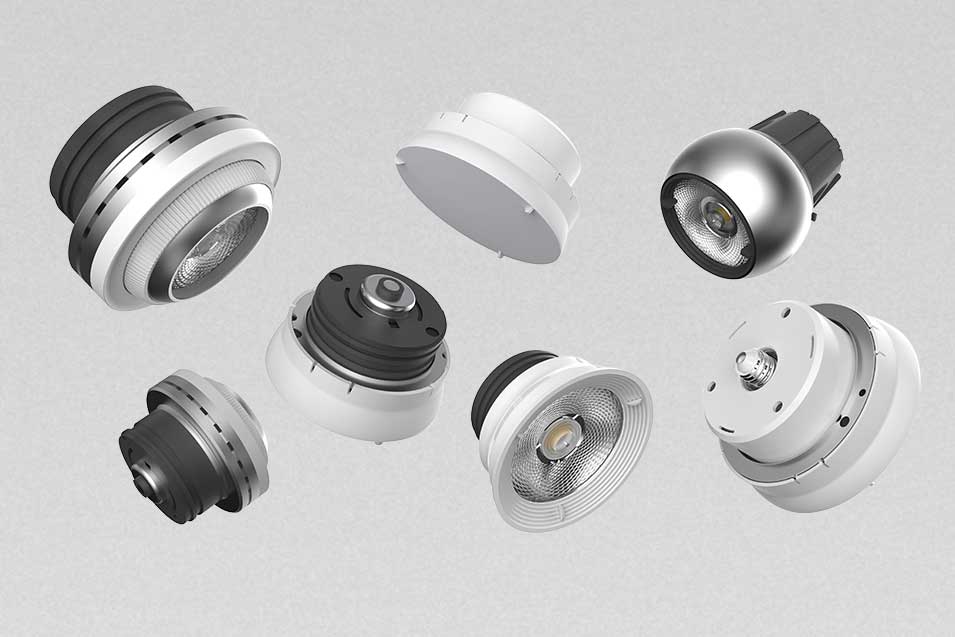
Lumens Per Watt: What is it & Why Does It Matter?
18th August 2025 | Written By: Vinod Pottayil | Read Time: 3min | Last Updated: 18th August 2025
Lumens and watts are displayed clearly on light bulb packages. Have you ever been curious what they mean, how they are interrelated and how they impact your electricity bills? Let’s help you understand in detail.
Lumens vs Watt
Lumens, expressed as ‘lm’, refer to a bulb’s brightness. In layman’s language, it ascertains the extent of visible light that a human eye can receive or notice from a light source. If the rating of lumens is higher, the light source will appear to shine with more intensity.
Watt, expressed as ‘W’, refers to a bulb’s power usage to yield a certain amount of light. The higher the wattage, the more heat it will cause and more power it will need to function.
Incandescent bulbs use watt as a measure. However, lumens have become a primary measure of brightness for LED light sources.
Lumens Per Watt
Lumens per watt (lm/W) indicate the light output efficiency. It computes the efficiency with which a light bulb generates light relative to per watt electricity utilisation.
Lumens per Watt = Lumens ÷ Watts
Here are examples to explain further.
A 100W incandescent bulb using 100W electricity gives 1600 lumens has light output efficiency of 16lm/W (1600 divided by 100).
A 23W CFL bulb giving 1600 lumens has light output efficiency of 69.56 lm/W (1600 divided by 23)
However, a 20W LED bulb providing 1600 lumens has light output efficiency of 80lm/W (1600 divided by 20).
This comparison shows that a 20W LED bulb with the same lumens is 5 times more efficient than a 100W incandescent bulb and 1.15 times more efficient than CFL.
What Does Lumens Per Watt Matter?
-
Improved Energy Efficiency
The high energy efficiency of a light bulb means that it will use a significant portion of energy to generate light rather than losing it to heat.
Incandescent bulbs heat up quite fast, consuming more power than LED and CFL bulbs. While CFLs are nearly as effective as LEDs, they are ideal only for shops, offices or spaces which need lights running for a longer period. CFLs are also much more expensive the incandescent and LED lights.
In such a scenario, LED has a clear advantage over the other two in terms of lumens per watt. -
Decrease in Power Consumption
The better energy efficiency results in lower utilisation of power and, thereby, leads to a drop in electricity costs. Hence, there is considerable savings on electricity bills.
-
Superior Performance
Light bulbs with higher lm/W ratio also provide better brightness and enhanced lighting quality. This gives a good overall lighting effect to the space.
-
Better for Planet
Due to their higher light output efficiency, LEDs last 20-25 times longer than traditional bulbs. Moreover, they are zero mercury light sources. All these benefits make them an eco-friendly substitute for our planet.
According to a Government of India publication, a 7W LED bulb delivers the equivalent amount of light as a 14W CFL and a 60W incandescent lamp. Consequently, you can witness approximately 90% energy saving as against incandescent light and 50% as against CFLs. Further, an LED bulb requires only one unit of electricity to work for 140 hours while a CFL and an incandescent light consume two units and nine units respectively for the same duration. In this way, the operating expenditure of an LED bulb is merely Rs4 for 140 hours when compared to Rs8 for CFL and Rs36 for incandescent bulbs.
Conclusion
Next time you invest in lights for your home or office, make sure to check for lumens per watt on their packaging. LEDs meet most parameters on lumens per watt consideration, but it is still advisable to assess your inclusive lighting needs to make an informed decision.

Frequently Asked Questions (FAQs) :
- Q1. What is the difference between lumens and watt? Lumens indicate the brightness of the light bulb while Watt indicates its power consumption.
- Q2. What are lumens per watt? Lumens per watt (lm/W) are a measure of efficiency of light produced per watt usage of electricity. The higher the lm/W ratio is, the greater the efficiency of the bulb is.
- Q3. Which type of bulb offers higher lumens per watt ratio? LEDs and CFLs have a superior lumens per watt ratio than incandescent or other traditional bulbs. However, CFLs have a slightly lower ratio than LEDs.
- Q4. Which type of bulb is the best choice for lighting? There is no right or wrong bulb type. Each type has its pros and cons in terms of affordability, energy efficiency, lifespan and purpose of use. However, LEDs are ideal for most spaces as they tick most checkboxes, especially lumens per watt.
- Q5. What is the most important factor to check on the light bulb package – watt or lumens? The watt is an important consideration while buying incandescent lamps. However, with the popularity of LEDs increasing, people are gradually becoming aware of the importance of lumens. When you buy a light bulb, you should evaluate its efficiency on the basis of the lumens per watt ratio.




